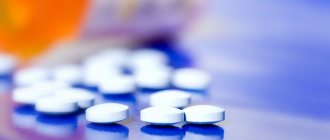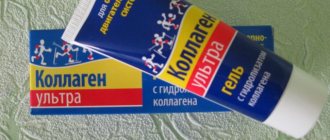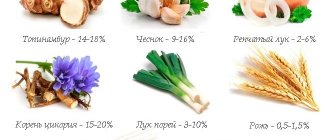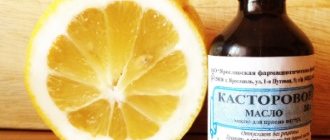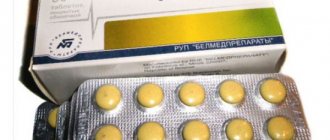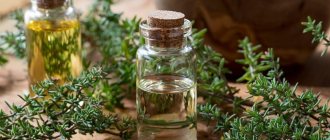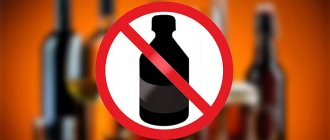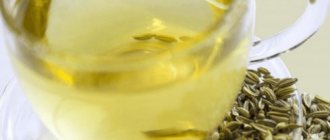What is capsaicin
Capsaicin gives the hot flavor to chili peppers.
The concentration of capsaicin in foods is measured using the Scoville heat scale, which measures 16 million units (16,000,000 Scovilles) for pure capsaicin. For comparison: Cayenne pepper has a heat of 30,000 to 50,000 scovilles, Jalapeño has about 8,000 scoville.
Capsaicin is extracted from hot peppers using acetone. Capsaicin extract is an oily liquid that has a distinct red or orange color and contains 5-10% capsaicin.
In its pure form, capsaicin is a white crystalline powder. This is a chemically stable element, vanilamide 8-methyl-6-nonenoic acid. The substance has a pronounced pungent taste, melting point 65 °C.
It is insoluble in water, but is highly soluble in organic solvents, including ethyl alcohol and fats.
It is a neuropeptide - an active compound that affects the synthesis, storage, transport and release of a substance known as TRPV1. It is a chemical mediator responsible for pain impulses in the nervous system.
Correct dosage
Food sources of capsaicin may not provide you with enough of this compound to receive all of its potential beneficial effects. Due to this, people take supplements because they have a higher concentration of capsaicin.
Although dosages vary, many studies use 2–6 mg of capsaicin per day (, ).
Most supplements on the market contain cayenne pepper as the main active ingredient, as it tends to be high in capsaicin. Each capsule typically contains about 500 mg of cayenne pepper.
Since cayenne pepper contains approximately 2.5 mg of capsaicin per gram, you will need two to five 500 mg capsules to get 2 to 6 mg of capsaicin.
Because the Food and Drug Administration (FDA) regulates dietary supplements differently than drugs, dosages are generally not standardized. Thus, to avoid possible side effects, it is best to start with a low dose.
Additionally, it is important to purchase capsaicin supplements from a reliable source. Third-party verification from companies such as NSF International or USP provides additional assurance of safety and quality.
Summary:
Research shows that 2-6 mg of capsaicin can benefit your health. This amount should provide two to five 500 mg capsules of cayenne pepper.
How does capsaicin work?
When you bite a pepper, you release capsaicin. Once in the body, capsaicin disables pain receptors, and they stop sending a signal of pain to the brain. An analgesic effect occurs. In more detail, Capsaicin is able to absorb neuropeptide P (substance P), which transmits pain signals from nerve endings to the brain. Less neuropeptide P means less pain. In addition, capsaicin increases the production of prostaglandin and collagenase, which reduce inflammation and affect the overall analgesic effect.
Capsaicin also acts as a neuropeptide (pretends to be a neuropeptide), interacting with TRPV1 (Transient Receptor Potential Vanilloid) receptors, signaling fake heat. This leads to more effective blocking of specific “pain” neurons, without affecting the others responsible for other senses, motor functions, etc.
TRPV1 receptors are responsible for the sensation of pain and heat. Activated at temperatures above 43 degrees, as well as with the help of capsaicin. The receptor is a non-selective ion channel capable of passing calcium ions. This is how the receptor sends a signal about an increase in temperature to the brain. Activation of this receptor is subjectively felt as pain and burning. The brain responds by giving a command to release endorphins into the blood. Endorphin can cause a state of mild euphoria and acts as a “native” pain reliever.
The myth about the dangers of hot peppers. Capsaicin
Let's say a word about hot pepper. Almost like a poor hussar.
We constantly hear from people phrases like “spicy peppers are forbidden”, “pepper causes stomach ulcers”, “pepper causes heartburn”, “spicy foods are bad for the stomach”, “pepper can cause cancer”, etc. Even doctors manage to utter such nonsense out loud. And some still do!
But how is it really? Is it true that red pepper can spoil something in the gastrointestinal tract ?
No! No and no again.
Over the past fifteen years, scientists have been intensively studying the magical properties of hot pepper. I wanted to write red, but color doesn’t play a role here. Hot peppers can be red, yellow or green. The essence of why it is hot is the alkaloid capsaicin . It is this substance that gives pepper its hotness. It's what makes you cough when it starts flying into the air.
In Thailand, at food markets (bazaars where they sell a variety of food), when one of the cooks throws a portion of pepper into a hot frying pan, all the eaters sitting at the food market begin to cough. Such an unobtrusive chemical attack. At first we couldn’t understand what was happening when everyone started coughing in a second. Then, over time, it turned out that it was pepper.
So about the pepper.
For some reason, everyone associates spiciness with Asia, but the tropical parts of Latin America are considered the birthplace of hot peppers. It was brought to Europe by Spanish and Portuguese sailors in the 16th century. And much later, only in the 17th and 18th centuries, it came to Asia.
Hot pepper, garlic, cumin and a number of other seasonings with hot properties destroy about 80% of known causative agents of gastrointestinal infections. This property has been known to mankind since prehistoric times, and people have used it successfully. They write that even in excavations of Indian settlements dating back seven thousand years, hot peppers are found (already cultivated, and not just some wild stuff). Although this very wild thing grows blessedly on its own to this day in Latin America.
In general, people took advantage of the bonuses of this pepper, until not so long ago, until some fool (not to put it in a completely uncultured manner) decided to blame hot pepper for half of the mortal sins (the second half of these sins were blamed on fats).
Hot pepper contains a lot of useful substances. I will list just a few.
Vitamin A (alpha and beta carotene) – 952 IU = 571 mcg. This is, of course, not cod liver, but more than in many vegetables. In the rankings right after carrots and broccoli. The only thing is that not everyone can eat 100 grams of hot pepper, but still. By the way, I can (though in the form of dishes). I’ll tell you in video recipes on my YouTube channel how you can deliciously eat hot peppers.
Vitamins B3 and B6 (2.5 mg)
Vitamin C - 140-150 mg, which is three times more than in lemons.
Vitamin PP – 15 mg
Vitamin K - from 20 to 50 mcg (depending on the type of pepper), with a daily dose of 60 to 120 mcg. And this vitamin is the main “fighter” against osteoporosis. This, of course, is not kale cabbage (480 mcg) or green onions (210 mcg), but still.
Potassium – 322 mg, not the best, but enough.
Magnesium – 23 mg.
(The numbers are given for 100 grams of fresh pepper, which is 2-3 medium jalapenos, or 5-7 grams in dehydrated form, that is, dried).
Peppers are also rich in cryptoxanthin (3.5 mg), zeaxanthin and lutein (310 mcg). In addition to the fact that these are natural dyes, and not only are these substances antioxidants that fight free radicals, they also directly affect vision processes.
Zeaxanthin is one of two carotenoids found in the retina of the eye. And lutein plays an important role in the physiology of vision. It prevents lens clouding, degeneration and destruction of the retina.
From the textbook: “A decrease in the protective function of the retina due to a lack of lutein in food leads to degeneration of the pigment layer of the retina (macular degeneration), and ultimately to complete loss of vision.”
By the way, in Latin America there are very few people with glasses! Perhaps this is due to the hot pepper.
Etc. etc. etc….
But these are all trifles, in comparison with the fact that hot peppers are the unique owner of a substance called CAPSAICIN .
Capsaicin is the most interesting and most “promising” substance contained in hot peppers. We'll talk about it today.
It is this substance that is now predicted to have almost the properties of a panacea for all diseases. Of course, we like to immediately call everything a panacea. But in every such panaceal discovery there is always a grain of truth, and a large grain, by the way.
As I already said, there used to be an opinion that eating hot pepper is harmful and that it is to blame for a bunch of gastrointestinal diseases, including cancer.
These statements were based on only one single statistical study of the countries of Southeast Asia. They traditionally consume a lot of pepper and have one of the highest statistics for gastrointestinal ulcers, stomach cancer, and cancer of various parts of the gastrointestinal tract. A correlation was made. A lot of pepper = a large number of gastrointestinal diseases. But correlation is not always, and even often, not the identification of causes. It's just a coincidence of several factors. It's like saying: he ate a lot of cucumbers, so he died. Although this could probably happen...
It was a long time ago. But until the last decade, doctors from all countries used this. And backward comrades are still taking advantage of it. Take any portal where it is written about pepper, contraindications – gastrointestinal diseases...
At the same time, at the same time, similar statistical studies of Latin American countries, where they also traditionally consume a lot of hot peppers, showed an absolutely opposite result. Residents of LA, on the contrary, showed and show the lowest level of gastrointestinal diseases, in particular peptic ulcers and cancer.
Perplexed fellow scientists and doctors nevertheless, “just in case,” wrote down hot pepper as the culprit and recommended that everyone not use it.
But what is encouraging is that science, although it is not particularly clear and is not at all a 100% thing, does not stand still.
After all, almost 50 years ago, and even 5-7 years ago, fat was a terrible “harm” and...then you know. And the hot pepper was there too...
Recently, in the middle of the first decade of the 21st century, a very intensive study of the properties of hot pepper began. And facts completely opposite to the harm emerged.
By the way, the mass study of pepper began again because of that old statistical study. We decided to check, using modern methods, why pepper has such a bad effect on the gastrointestinal tract. And what did it turn out to be?
But it turned out that pepper is not to blame for such poor statistics on cancer and gastrointestinal ulcers in Southeast Asian countries! First of all: the main culprit turned out to be the genetic characteristics of the citizens inhabiting these countries. And secondly, this is nature literally teeming with Helicobacter (the causative agent of ulcers and gastritis) and various staphylococci. Anyone who has lived in Southeast Asia will confirm that even the slightest cut turns into the wildest inflammation and can end badly. I can tell myself that the situation there is terrible. I even managed to catch a baby there. And if she herself had not shown vigilance and taken measures, hell knows how it could have ended.
But let's get back to research.
So, in the same studies it turned out that precisely thanks to the properties of hot pepper, the citizens of Southeast Asia are still alive and the spread of severe gastrointestinal diseases has not yet completely killed the population of these countries. The nonsense has also become clearer: why, with the same consumption of pepper, people in Southeast Asia get sick, but not in LA. Residents of LA do not have a genetic predisposition to these diseases. Plus red pepper - everyone is healthy.
Firstly: from that moment on, pepper was rehabilitated and it was no longer banned. And secondly: it began to be used in the treatment of those diseases for which it was previously prohibited. The effect of a bomb exploding occurred. Active research into capsaicin . Fellow researchers have found an unplowed field of work for themselves. And we are very grateful to them for this.
They dug up a bunch of necessary and useful information. And these are not only experiments on mice and monkeys, these are already confirmed facts on humans.
What did they find out? “They” are multiple studies of different countries, it’s impossible to even mention them all, so many have done this.
Useful and currently proven and re-tested properties of capsaicin .
Now, in connection with intensive studies of the microbiome and capsaicin, it has been established that capsaicin changes the composition of our intestinal flora for the better, fighting pathogenic microflora and supporting beneficial ones.
Improves blood circulation. Capsaicin stimulates the cardiovascular system, relaxes blood vessels, and also reduces the level of bad cholesterol (LDL and VLDL) in the blood. Capsaicin helps prevent hardening of the arteries (atherosclerosis) and embolism (blockage of blood vessels by gas bubbles or foreign particles called emboli). Reduces the risk of strokes.
Capsaicin thins mucus and helps clear it from the lungs, strengthens lung tissue, and helps prevent and treat emphysema. Anti-asthmatic properties of capsaicin are also noted; it acts as a bronchodilator. Also, the use of capsaicin nasal sprays for chronic non-allergic rhinitis allows you to relieve dependence on vasoconstrictor drops.
Capsaicin is a good fighter against insomnia.
Some even write that capsaicin increases libido, being an aphrodisiac. This is due to the property of capsaicin to promote the production of endorphins, and where there are endorphins, there is, like, sex.
But these are still flowers.
For starters, people with Gastroesophageal Reflux Disease (GERD) have stopped prohibiting the consumption of hot peppers. It has now been reliably established that capsaicin from hot peppers significantly reduces the manifestations of functional dyspepsia and the symptoms of heartburn.
* Dyspepsia - designates one or more signs of disruption of the upper digestive system: the esophagus, stomach and part of the small intestine.
Moreover, research at New York University Langone Medical Center has shown that capsaicin has a protective effect on the gastric mucosa, helping to prevent damage to the gastric mucosa from irritants such as NSAIDs (non-steroidal anti-inflammatory drugs) and alcohol. Similarly, a 2014 Digestive Diseases and Science study showed that a group of subjects who consumed NSAIDs (or alcohol) and chili powder at the same time had 63% less damage to the stomach lining than a control group that did not consume pepper.
So, my dears, it’s better to eat vodka with spicy snacks than with hot ones!
It has been found that hot pepper, constantly added to the diet, enhances gastric secretion, improves digestion and helps to completely absorb nutrients in the small intestine. Under the influence of capsaicin, the liver produces more bile, which leads to better and more complete digestion. But besides this, hot pepper contains various flavonoids, which, together with capsaicin, help restore damaged liver cells (if any). With low acidity, it is now even recommended for regular use.
Numerous studies have already proven that it is capsaicin that directly affects the elimination (destruction, simply) of Helicobacter pylori, which makes it one of the best (!) natural remedies for the treatment of Helicobacter-associated ulcers and gastritis.
This property of capsaicin as the relief of pain and neuralgic pain has been studied a long time ago and capsaicin has long been used in painkillers for external use. In dentistry, it has been used for a long time and in painkillers. The first external products containing extracts of red pepper began to be produced at the dawn of the twentieth century.
But the fact that capsaicin eliminates pain in gastrointestinal diseases has only recently become known.
A study by Alimentary Pharmacolology and Therapeutics from 2002-2008 confirmed that with long-term use of capsaicin, the pain and symptoms accompanying dyspepsia are significantly reduced. And researchers hope that perhaps the use of capsaicin could also be a drug to completely cure these diseases. New research continues.
Capsaicin selectively acts on channels transmitting pain signals, or rather has the ability to absorb a neuropeptide called substance P, which, in fact, is the transmitter of pain signals from nerve endings to the brain. By influencing the reduction in the amount of substance P, thereby weakening the pain signal, capsaicin also increases the production of prostaglandin and collagenase, which relieve inflammation and affect the overall analgesic effect.
Capsaicin also acts as a neuropeptide, directly binding to the recently discovered TRPV1 receptors (Transient Receptor Potential Vanilloid), which leads to a more effective blocking of specific “pain” neurons, without affecting the others responsible for other senses, motor functions, etc. d.
It has already been reliably proven that capsaicin helps to “calm down” pain of various etiologies:
Postoperative pain and various pain disorders Pain due to problems with the nervous system - diabetic neuropathy, trigeminal neuralgia, postherpetic neuralgia Pain due to psoriasis (and treatment of psoriasis itself) Pain due to joint diseases - rheumatoid and osteoarthritis Migraines (capsaicin nasal sprays are successfully used, after a two-month course of treatment which greatly increases the intervals between attacks, and in many patients migraines go away completely)
In American clinics, patients are given large doses of capsaicin for several days before cardiovascular surgery to prevent postoperative blood clots.
The effect of capsaicin on TRPV1 receptors causes increased production of endorphins. Which reveals another of its properties - antidepressant, since endorphins are not only a painkiller, but at the same time a mood-enhancing “remedy”. The love for spicy food is caused precisely by the increase in endorphin levels when eating pepper.
Now huge, multi-billion dollar funds are being spent on studying the properties of capsaicin , since preliminary research has made it clear that thanks to the biochemical properties of hot pepper and capsaicin specifically, it is possible to obtain medicines that can (presumably for now) treat a wide range of diseases. Chronic depression and pain, neurodegenerative diseases (due to its powerful protective effect on nerve cells, which makes it useful for the prevention and treatment of Alzheimer's disease in particular), diabetes, cancer and obesity. Yes! Obesity!
It is known that metabolic rates are directly proportional to weight. The lower your weight, the lower your metabolic rate. So, capsaicin manages to maintain a stable level of metabolism, and in some cases even “speed up” it.
I have already mentioned that capsaicin reduces the level of “bad” cholesterol, but it also activates the process of fat oxidation and directly affects the efficiency of this process.
Taking capsaicin stimulates the release of adrenaline, which activates internal or resting metabolism. 10 gr. hot pepper increases the metabolic rate within 30-120 minutes after eating, and after 120 minutes it gradually ceases to act. Studies have shown that the use of capsaicin significantly increases the rate of fat oxidation (using fat as fuel rather than glucose). The maximum effect was achieved with a dose of 10 mg per 1 kg of body weight approximately 1 hour before training, in both trained and untrained people.
Capsaicin also acts on TRPV1 receptors and affects thermogeneration. Some studies say that the fat burning process becomes more effective precisely because of energy consumption due to an increase in heat generation by 30% more after consuming hot pepper (capsaicin). The maximum effect of thermogeneration and effective fat oxidation occurs when hot peppers are consumed in combination with fatty foods. After eating pepper with carbohydrate foods, this effect is practically absent. The only thing is that pepper slows down the rate of oxidation of carbohydrates themselves, making them “slower”.
The use of capsaicin significantly reduces the levels of leptin, insulin and glucose, as well as a number of other substances responsible for the process of fat deposition. At doses of 10 mg per kilogram of weight, the process of fat accumulation in adipocytes is powerfully inhibited.
Researchers even give recommendations on how much pepper or capsaicin to consume for fat burning and weight loss.
1 gram of dry ground or 28 grams of fresh hot pepper per day. Or capsaicin in capsules or tablets (and, by the way, it is already sold in pharmacies) 30-120 mg 1-3 times a day.
Capsaicin is considered the safest fat burner, no side effects have been identified. And addiction to capsaicin has not yet been identified, either, unlike other fat burners. But this has not yet been fully clarified (our scientists carefully add). And they also advise not to exceed the dose (this only applies to capsaicin in tablets, not in peppers), since the mechanisms of action of capsaicin have not yet been fully elucidated, because “who knows,” as they say, God protects those who are careful…. Fellow researchers are worried that large doses of capsaicin can suddenly still cause stomach cancer, while small doses, on the contrary, show a successful anti-cancer effect, protecting the entire gastrointestinal tract.
Capsaicin also able to neutralize chronic inflammation in obesity, provoked by a large number of fat cells and associated diseases. But it has not yet reached widespread use; full-scale studies are underway in humans. So - “soon in pharmacies”...
For example, such a correlation that in countries where a lot of hot peppers are consumed, the incidence of diabetes is minimal - has given rise to a whole lot of scientific research into the antidiabetic properties of capsaicin.
At the Department of Molecular and Cellular Biology at Berkeley, after many years of research, they say: “We are already very close to the solution!” In the spring of 2021, the results of preliminary studies were published confirming the connection between capsaicin and diabetes, obesity and even life expectancy. But so far these have been animal studies. In addition to the fact that capsaicin “stupidly” lowers blood sugar levels, other interesting properties have been identified. The same TRPV1 receptors were “atrophied” by capsaicin in various animals. And as a result, with the “non-functioning” TRPV1 receptor, the production of the substance CGRP, a specific substance that inhibits and sometimes even stops the synthesis of insulin by the pancreas, has significantly decreased. This fact, by the way, gave scientists hope for the possibility of treating type 1 diabetes with capsaicin. So, animals with an atrophied TRPV1 receptor are immune to obesity and diabetes, and their life expectancy increases by 13-15%. Therefore, scientists, full of bright hopes, continue their research and plan to launch studies on humans. We are waiting for the results.
Cancer!
Capsaicin fights cancer cells!
Several countries are simultaneously conducting research on capsaicin and cancer . And they come to the same conclusions. Which is good news.
Malignant tumors after consuming capsaicin are destroyed many times faster by irradiation, which makes it possible to reduce the “quantity and quality” of irradiation. Capsaicin seems to “soften” the tumor, making it more sensitive, making it much easier and faster to destroy. Nottingham University Research
concerned prostate cancer.
Digests of other studies, published in 2013-14 and 2016, are encouraging with results regarding other types of malignant tumors: breast, liver, intestinal and pancreatic cancer. Moreover, capsaicin, surprisingly, acts completely differently in each case. In one case, it provokes apoptosis (suicide) of cancer cells; in another, it breaks the gene structure of cancer cells; and in the third, it stops the growth of malignant formations, miraculously turning them into benign ones (this mechanism is not yet clear to scientists, as they themselves admit).
It is now believed that even if capsaicin does not become a full-fledged panacea for cancer, it certainly will become an adjuvant that greatly increases the possibility of a complete cure.
And instead of conclusion:
In general, the whole spiciness of pepper is a pure chemical mystification of the body. The same TRPV1 receptors are attacked by capsaicin molecules; in response to this attack, the receptors send an attack message along neurons to the brain and cause a rush of potassium ions into nearby cells. The body perceives this entire adventure as real pain, additionally including the production of endorphins and sweating.
***
There is only one way to stop the burning sensation after eating pepper (well, in case you need to). And the product is milk casein. That is, you should simply drink a little milk. Milk casein binds capsaicin molecules (as if sealing them into capsules) preventing them from affecting TRPV1 receptors and then successfully removes them. In such cases, water is no help at all; drinking it is useless.
So, my dears, the myth about the dangers of pepper has now been completely officially refuted! And as always, the myth turned out to be just a myth. You can absolutely safely eat pepper without fear for anything.
Now, I’ll even say this - you have to eat pepper, what if it really is so magical. And even if only part of its magical properties remain one hundred percent confirmed, then this is already a huge help to our body in the process of maintaining health in our strange world. And perhaps in prolonging our lives!
Be healthy! Live Long!
Yul Ivanchey
Story
Capsaicin is an alkaloid similar to caffeine, nicotine, morphine, etc. Chili, cumin, garlic and a number of other hot spices that contain capsaicin destroy up to 75% of the most common food poisoning pathogens. This property was already noticed by early civilizations, especially in hot countries, where hot peppers helped keep food suitable for consumption.
In excavations of Indian settlements, hot peppers are found that were cultivated 7,000 years ago.
The origin of the name is not reliably known. It may be derived from the Greek "kapto", which means "to bite". According to another version, the name comes from the Latin word “caspa”, which means “box”, since the internal structure of the compound is similar to a box.
Capsaicin was first isolated in the mid-19th century (1846). The exact chemical structure of this alkaloid was first determined by E.K. Nelson in 1919, and synthesized only in 1930. While researching the properties of capsaicin, Wilbur Scoville, an employee of a large pharmaceutical company, was studying the heat of different varieties of chili. In 1912 he introduced his famous scale.
In the mid-20th century, sociologists noticed that residents of Southeast Asia had an increased percentage of gastrointestinal diseases. A correlation was drawn between sick people and eating spicy food and the conclusion was drawn: spicy food is harmful to the stomach. In the same study in South America, the results were completely opposite: one of the lowest rates of gastrointestinal diseases in the world. But just in case, pepper was given the honorary title “harmful”. And this was enough to bury the reputation of chili for several decades. In the 21st century, scientists, already possessing the technical capabilities for detailed analysis, regularly present new discoveries about the effects of capsaicin on the body. While we are watching this race, we can take a closer look at what attracted pharmacists so much to hot peppers.
The dangers of capsaicin
In general, today capsaicin is considered relatively safe. Moreover, it is used exclusively in repeatedly diluted form. However, one milligram of pure capsaicin, coming into contact with human skin, causes a severe chemical burn, which in terms of the strength of its effect can only be compared with hot metal. Once on the mucous membrane, the alkaloid causes severe burning, pain, lacrimation and mucus discharge. In some cases, a reaction to capsaicin provokes spasm of the larynx, bronchi, and even short-term loss of speech. In fact, that's why pepper spray came into being.
The good news is that it is very difficult to find capsaicin in its pure form, and it is not necessary, because, like vinegar essence, for example, it must be diluted many times before use to the required concentration.
Hot peppers contain capsacin content ranging from 0 to 2,500,000 scovilles. But even with a small concentration, unpleasant consequences can occur.
When consumed in large quantities and by unprepared consumers, hot peppers can cause unpleasant sensations - a burning sensation, for example.
There are allergies to hot peppers. If you are sensitive to pepper, coughing and even choking may occur after inhaling its smell. Sometimes allergies manifest themselves in the form of skin rashes and dermatitis.
Pepper increases the production of acid in the stomach, so it is not advisable to use it if you have high acidity.
This all sounds a little scary. But right now you will find out why capsaicin is useful, and perhaps this will radically change your attitude towards spicy food.
Capsaicin ointment - instructions for use
It is best to get acquainted with the drug Capsaicin according to the instructions attached to it. Its sale is free, no prescription required.
The manufacturer instructs to apply the substance to the problem area. In some cases, additional devices are included for this purpose.
After applying the ointment, you must wash your hands thoroughly to prevent accidental contact of the active substance with your eyes or nasal mucosa.
Do not use the ointment on irritated or damaged skin. The treated area should not be heated or exposed to sunlight.
Usually drugs are used up to 3 times throughout the day. Compliance with exact time intervals is not required.
If after contact of the ointment with the skin there is a feeling of itching or severe burning, it should be removed as quickly as possible using running water and soap.
The cost of such drugs may vary depending on the characteristics of the drug and the manufacturer. The lower price limit for them is about 100 rubles.
Mood
TRPV1 receptors under the influence of capsaicin cause an increase in the production of endorphins, which, in addition to relieving pain, are responsible for improving mood. Scientists have proven the connection between eating spicy food and the production of endorphins. There is an assumption that it is this feeling of pleasure and happiness that causes attachment among spicy lovers and gets them hooked on eating chili peppers.
Some people equate capsaicin with an aphrodisiac because it promotes the production of endorphins, and endorphins improve the quality of sex.
Analogues of the drug
In addition to drugs containing capsaicin, there are a number of medications that have a similar effect, but this effect occurs due to completely different substances.
Although most of them are also of natural origin:
- "Alizartron" is based on the use of bee venom and has a warming and analgesic effect.
- "Viprosal" the main component is the poison of the viper, and the main direction of application is rehabilitation after injuries and diseases of the musculoskeletal system;
- Sanitas balm, which contains camphor and turpentine, has a warming effect;
- Sophia cream, containing bee venom, is used to relieve swelling and inflammation, as well as to rehabilitate joint mobility and relieve pain;
- Gel “911” contains bee venom, relieves pain, and helps restore joint tissue.
Gastrointestinal tract
Capsaicin inhibits the proliferation of a number of bacteria. For example, Chili, cumin, garlic, ginger and a number of other hot spices destroy up to 80% of common pathogens of gastrointestinal infections, E. coli (Escherichia coli), as well as Bacillus megaterium, Bacillus pumilus.
Destroys Helicobacter pylori bacteria, being one of the best natural remedies for the treatment of Helicobacter-associated ulcers and gastritis.
It has a protective effect on the gastric mucosa, prevents negative consequences from drinking alcohol or certain types of medications (non-steroidal anti-inflammatory drugs, aspirin).
Hot pepper enhances gastric secretion, that is, improves digestion and helps absorb nutrients.
With low acidity, capsaicin reduces heartburn.
Capsaicin is not digested by the body, passes throughout the gastrointestinal tract and ultimately affects the walls of the large intestine, helping to prevent constipation.
Fighting excess weight
Spicy foods help burn fat. Capsaicin is considered one of the safest natural fat burners. Reduces the level of triglycerides in the blood, increases the number of enzymes in the liver involved in fat metabolism, accelerates metabolism, activates the process of fat oxidation, and is a thermogenic agent. By stimulating the release of adrenaline, it increases metabolism and helps burn calories and fat.
Moreover, in laboratory mice, capsaicin neutralized chronic inflammation caused by fat cells, allowing scientists to hypothesize that capsaicin is useful in combating not only obesity, but also related diseases.
It has been proven that capsaicin helps reduce the hormone ghrelin, which is responsible for the feeling of hunger.
To maintain your dietary norm, it is enough to consume 30 grams of hot (for example, cayenne) fresh pepper or 1 gram of dry pepper per day. If you are planning a workout and want to actively fight excess weight, eat hot peppers an hour before training at a rate of 10 mg. For 1 kg. weight. Capsaicin is also sold in tablets at any pharmacy. The rules of use and dosage are written in the instructions for the drug.
It is important to remember that today this is just a hypothesis that has yet to be tested in practice.
Capsaicin tablets - instructions
Capsaicin in tablet form comes with instructions. It is necessary to start using it with a small dosage - it must first be agreed individually with your doctor. In the future, if there are no negative manifestations while taking the drug, such as stool upset or nausea, the dosage can be gradually increased.
Such tablets are contraindicated in cases of high blood pressure or an allergic reaction to the active substance.
To prevent negative consequences, you should consult your doctor before using them.
Diabetes
Eating spicy food significantly reduces the risk of diabetes and increases life expectancy. This has long been proven by numerous studies. For example, Andrew Dillin, a professor at the Department of Molecular and Cellular Biology at the University of California at Berkeley (USA), conducted tests on rodents. Those mice in which the TRPV1 receptor was neutralized by capsaicin developed lasting immunity to diabetes and obesity; Their lifespan was 14% longer than that of mice whose TRPV1 receptor was not exposed to capsaicin.
Regular consumption of spicy foods reduces cholesterol, leptin, insulin and glucose levels.
Pain
The analgesic properties of capsaicin have been known since ancient times: Indians rubbed a pod of chili pepper on their gums to get rid of toothache.
Capsaicin ointments can be used as a natural pain reliever for muscle and joint pain. It is important to understand that a feeling of burning and heat inevitably accompanies any use of capsaicin. But immediately after the pain will subside.
Capsaicin has been proven to help cope with pain of various origins:
- Postoperative pain and various pain disorders
- Pain due to problems with the nervous system - diabetic neuropathy, trigeminal neuralgia, postherpetic neuralgia
- Psoriasis pain (and treatment of psoriasis itself)
- Pain due to joint diseases
- Migraine
Capsaicin and lidocaine patch - instructions
Various patches with the active ingredient capsaicin are usually used to achieve a warming or analgesic effect. The instructions show their use for such ailments as neuralgia, radiculitis, colds, arthritis, myositis and lumbago.
The use of patches on irritated or damaged skin, as well as in case of an individual negative reaction to capsaicin or lidocaine, is unacceptable. They are usually prescribed to children over 12 years of age and adults.
You can purchase such a patch at a pharmacy for a price of 50 rubles. The cost depends on the number of pieces in the set and the size of the patch, from the manufacturer.
Blood pressure and circulation
As everyone knows, high blood pressure worsens the health of your heart and arteries, increasing your risk of heart disease and kidney disease. A 2010 study published in Cell Metabolism found that capsaicin relaxes blood vessel walls, lowering blood pressure.
In addition, it reduces the level of bad cholesterol (LDL and VLDL), reduces the risk of atherosclerosis and embolism (clogging of blood vessels with gas bubbles or foreign particles, emboli).
Cardiovascular diseases
Capsaicin reduces the risk of strokes. Helps in the treatment of hypertension and other cardiovascular diseases, stimulating the functioning of the cardiovascular system. Helps prevent hardening of arteries and embolism.
Some medical institutions prescribe high doses of capsaicin to heart patients several days before surgery to prevent blood clots.
Oncology
Capsaicin creates a kind of “protective barrier” by inhibiting DNA binding and the ability of a number of chemical carcinogens to cause cell mutation. Not long ago, a group of scientists from the University of Toronto, followed by scientists from the University of Nottingham, proved that taking capsaicin before irradiation makes malignant tumor cells more sensitive to radiation (we were talking about prostate cancer). Relatively speaking, it “softens” them, making them easier to destroy. In 2014, scientists from the University of Alcala (Spain) discovered that capsaicin successfully helps fight other types of cancer, including colon, pancreatic, liver, and breast cancer, although in each case it acts differently - in some cases it causes suicide cells, in others it breaks the tumor growth mechanism.
It is now believed that even if capsaicin does not become a full-fledged panacea for cancer, it will definitely become an adjuvant that greatly increases the possibility of a complete cure.
But the research has not yet been completed, capsaicin-based drugs have not been introduced to the world. It is important to understand that capsaicin has a powerful effect on the body and, like any other drugs, can cause severe harm to health if used incorrectly. We all understand that treatment of serious diseases must be carried out strictly under the supervision of a doctor and in compliance with all medical recommendations.
Rules of application
Instructions for use of the products are different for each release form:
- The patch is applied to the areas of the skin where the greatest pain is felt, and then fixed. During application, avoid areas with open wounds and other damage. The wearing period is 7–9 days, after this time the patch should be replaced.
- The ointment/cream/gel is applied to the affected area in a thin layer. After application, you need to wait 2-3 minutes until the composition is completely absorbed. For pain and inflammation, the drug should be taken 2 times a day. If your goal is to warm up your muscles before a challenging workout, squeeze out a strip of product up to 5 cm long from the tube, apply to the affected area and rub into the skin. The product must be used once.
- Capsules/tablets for oral administration are taken with meals. The regimen and course of treatment are determined by a specialist.
Capsaicin can have a number of side effects and negative effects on the skin.
If you are intolerant to the components and prone to allergic reactions, itching, redness of the skin, swelling, and urticaria are possible. At the site of application (plaster application), the following may appear: pain, papules, dermatitis, inflammation, swelling or dryness. If the product is used in capsule form, side effects such as changes in taste, disturbances in the gastrointestinal tract, throat irritation, pain in the limbs, increased blood pressure, and palpitations are possible.
Alzheimer's
Capsaicin is used to prevent and treat neurodegenerative diseases such as Alzheimer's disease. Thanks to its antioxidant properties, it has a powerful protective effect on nerve cells.
It is difficult to find ailments from which capsaicin will not protect us. In any case, the proven benefits of this product are so extensive that the inclusion of capsaicin products in the daily diet is highly recommended.
It is important to understand that large-scale research on capsaicin began relatively recently (for example, the TPRV1 receptor, which is primarily affected by capsaicin, was discovered only in 1997). Today there are many hypotheses, as well as observations, studies and empirical research. Many of them have yet to be tested in practice and in laboratory conditions.
Bonus to everyone who read this article to the end: a 10% discount on any sauces using the ididit for any sauces except those that are already on sale at a discount. The discount cannot be combined with others and is valid until April 30, 2021.
Sauces and other capsaicin-based products can be found at this link.
